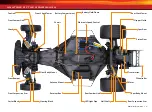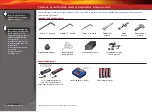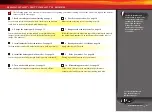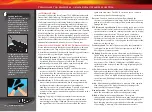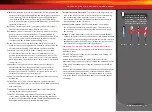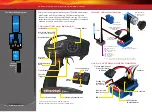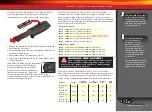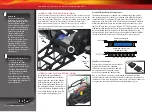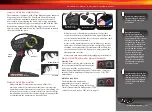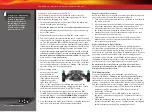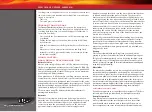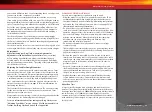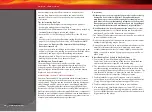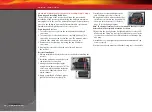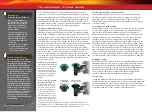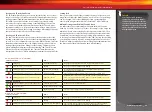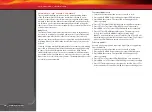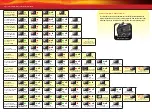
DRAG SLASH • 21
your vehicle difficult to tune. Look for anything that is out of spec and
repair or replace the components as needed.
The rear tires are very important. Make sure that the tires are very
clean and in good condition with even wear. Check the glue bead for
damage. Make sure the tires spin true with no significant high or low
spots. Store your Drag Slash with the tires elevated to avoid flat spots.
Part of the prep is having clean tires. Light scuffing of the tires can
help with traction. To scuff the tires, lightly apply some medium to
fine sandpaper back and forth over the tire tread while applying a
small amount of throttle.
Check the alignment. If your front tires are not pointing straight
ahead, it can cause extra drag and difficulty steering straight. Refer to
the Owner’s Manual for more detail on adjusting the alignment with
the metal turnbuckles.
Check the wheelie bar to make sure it is not bent or damaged. A bent
or damaged wheelie bar can cause the vehicle to not launch straight.
Adjustments
When fine tuning your Drag Slash, make small incremental
adjustments to the truck and only one at a time
. Take several runs
before making any adjustments; always confirm that change is
actually needed. Be consistent with your burnouts and Trans Brake,
and try to limit any other variables. The setup of the truck should be
checked before each run.
Adjusting Pre-Load for Straight Launches
If the vehicle is swerving to one side when launching, move a 1mm
pre-load spacer from one of the rear shocks to the rear shock on the
opposite side.
For example, if it swerves right when launching, move a
1mm pre-load spacer from the left rear shock to the right rear shock.
If
a smaller adjustment is needed (the truck is slightly drifting to one
side), only remove the spacer from the opposite side rear shock; do
not put it on the other shock
(see page 25 for more information on
fine tuning the shocks).
The front shocks do not have pre-load spacers. The out-of-box setup
for the rear shock spacers is: one 4mm, one 2mm, and two 1mm
thick spacers for each rear shock.
Always make sure the steering is centered (steering trim) and that the
camber link and toe link settings haven’t changed.
For more information about fine tuning your Drag Slash, see the
“Adjusting Your Model” section on page 25 of this manual or visit
Traxxas.com/Drag Slash and click on the
Support
link.
DRIVING PRECAUTIONS
Here are some important precautions to keep in mind:
• Allow the model to cool for a few minutes between runs. This is
particularly important when using high-capacity battery packs
that allow extended periods of running. Monitoring temperatures
will extend the lives of the batteries and motors (see page 28 for
information on monitoring temperatures).
• Do not continue to operate the model with low batteries or you
could lose control of it. Indications of low battery power include slow
operation, sluggish servos (slow to return to center), or ESC shutdown
due to the Low-Voltage Detection circuitry. Stop immediately at the
first sign of weak batteries. When the batteries in the transmitter
become weak, the power light will begin to flash red. Stop
immediately and install new batteries.
• Do not drive the model at night, on public streets, or in large
crowds of people.
• If the model becomes stuck against an object, do not continue to run
the motor. Remove the obstruction before continuing. Do not push or
pull objects with the model.
• Because the model is controlled by radio, it is subject to radio
interference from many sources beyond your control. Since radio
interference can cause momentary losses of control, allow a safety
margin of space in all directions around the model in order to
prevent collisions.
• Use good, common sense whenever you are driving your model.
Intentionally driving in an abusive and rough manner will only result
in poor performance and broken parts. Take care of your model so
that you can enjoy it for a long time to come.
• High-performance vehicles produce small vibrations that may
loosen hardware over time. Frequently check wheel nuts and
other screws on your vehicle to ensure that all hardware remains
properly tightened.
About Run Time
A large factor affecting run time is the type and condition of your
batteries. The milliamp hour (mAh) rating of the batteries determines
how large their “fuel tank” is. A 3000mAh battery pack will theoretically
run twice as long as a 1500mAh sport pack. Because of the wide
variation in the types of batteries that are available and the methods
with which they can be charged, it’s impossible to give exact run times
for the model.
DRIVING YOUR MODEL

